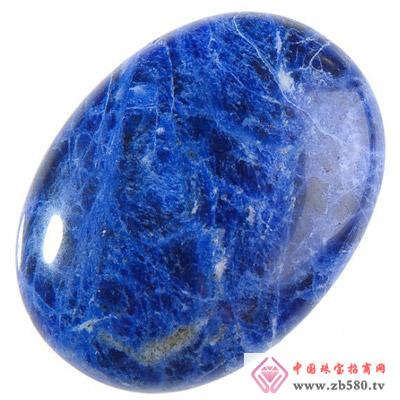Sodalite is rare in nature. It is mainly produced in igneous rocks such as nepheline syenite, trachyte and ring rock, or in contact with metamorphic skarn, often with nepheline, leucite, feldspar, and zirconium. Minerals such as stone are symbiotic. Other gemologists have found that sodalite has a little symbiosis with calcite. However, some of the sodalite has a similar appearance to lapis lazuli (LapisLazuli), so it is commonly used as a substitute for lapis lazuli in the gem market, but sodalite rarely contains the characteristic pyrite of lapis lazuli. Inclusion.

Name of the stone: Sodalite
Category: Silicate minerals
Ingredients: Na8Al6Si6O24Cl2
Crystal system: monoclinic and triclinic
Hardness: 1~2
Specific gravity: 2.7~2.8
Origin: Canada, India, Angola, Brazil, Norway, Botswana, USA, Namibia
The sodalite is usually blue and a few are white, green, red, purple or gray. Crystals are quite rare and are produced in the form of massive, granular or tuberculous forms in nature. Generally, it has a glass luster, and on the cleavage surface, it is a grease luster.
Sodalite is a silicate mineral containing sodium, aluminum and chlorine. When nitric acid is added and silver nitrate is added, a white green silver precipitate is produced. When chlorine is replaced by sulfur in the composition, the sulphate (Hackmanite) is formed. The purple sodalite was first discovered in Greenland. Until recently, samples of the purple sodalite on the transparent cut surface were reported. Violet soda is produced in Canada (Mont Saint-Hilaire, Quebec and Bancroft, Ontario), Magnet Bay in Arkansas, Libertiville, Illinois, New Jersey, Brazil's Mina SGILASS (a state in central and eastern Brazil), Kola Peninsula, Russia and Greenland (Danish island). In recent years, there have been the Mugu area in Myanmar and the Badakhshan province in Afghanistan.
In general, smectite is exposed to white light for hours to more than one day to reach the maximum fading drop, while using short-wave UV lamps to deepen the color takes only a few minutes. After staying in the dark for at least three weeks, the color of the light absorption reaction changes the most.
Violetite can be left in the dark for days to months when the color fades or deepens, depending on the material of the origin. In most cases, the material turns pink to purple/violet when exposed to UV radiation, and fades when exposed to sunlight or artificial white light. In general, heating to above 500 ° C will destroy the UV sensitivity of the sodalite, which will affect its discoloration.
Although smectite is considered to be one of the types of sulphur-containing sodalite in gemology, the difference lies in its light absorption, but there is no clear guide to distinguish between zircon and sodalite. In general, only sodalite has a significant light absorption reaction to be called sodalite.
Velvet Fabric,Black Velvet Fabric,Loop Velvet Fabric,Printed Velvet Fabric
CHANGXING HUALONG SILK CO.,LTD , https://www.cxhualongtextile.com